Sparring scenes matter. To write great scenes with sparring, we first need to understand what sparring is, isn’t, and what makes them great.
If you look up “the best fighting movies of all time,” you will see a great deal of overlap in the top ten. I have seen many of those films and they all have something in common beyond fighting sequences. They all have scenes with sparring. Now, I don’t know about you, but I love those scenes. They are far more than action sequences. In this post, we will look at writing scenes with sparring. We will look more closely at the purpose of sparring, common the pitfalls to avoid in your scenes with sparring and why those sparring scenes matter more than the fight.
Sparring: What It Isn’t Scenes with Sparring
Fight training is an umbrella term for conditioning the body to fight. Two of the ways fighters train are through drilling and sparring. At least half of the sparring scenes I read are actually scenes with drilling. The two are not the same.
Drilling is repetitive movement with intention. For example, a boxer may repeat a punch combo with focus and precision repeatedly for several minutes, several times, every single day. This teaches the boxer’s body to do this sequence without the brain thinking on it. This is what is known as muscle memory. Muscle memory is incredibly important because in fighting, if you think, you are late. By that I mean that the half second you take to consider your moves puts you a half second behind your opponent. Drilling is for creating and reinforcing muscle memory. Characters will drill a lot before they spar because drilling teaches them moves used for sparring. And, no matter how long you fight, you will always drill to keep basic movements crisp.
How to Punch Where to Punch a Character What Not to Do When You Punch
Sparring: What It Is
Sparring is not for learning. The vast majority of sparring scenes that I have edited are actually drilling scenes. And, more often than not, they involve sharp swords. A master and apprentice will square off, the master will get the upper hand, knock down or disarm the apprentice, then instruct the pupil on where they went wrong. That is not sparring. That is instruction and incredibly dangerous instruction, which I will get back to.
Sparring is controlled fighting. It mimics the actual fight parameters with predetermined intensity. “Light sparring” means the fighters are going slower and with greater care. “Hard sparring” is more like the actual fight yet not usually with 100% intensity so as to avoid injury. Even when it is hard sparring, it is hard to mimic the level of actual competition. Also, striking arts will generally not go 100% just to avoid concussions. Grappling arts may go as hard as they can without completely submitting their training partner. writing scenes with sparring
There are several purposes to sparring. First, it forces the fighter to use the techniques they have learned against a variety of partners who are actively defending and attacking. Using several different partners allows the fighter to experience different body types and fighting styles. Second, sparring shows a fighter the strengths and weaknesses in their technique. Three, it allows the fighter to create a strategy based on those strengths and weaknesses. Lastly, sparring acclimates the fighter’s body with high adrenaline. Adrenaline can mitigate complex thinking. The better acquainted the body is with adrenaline, the more productive the body can be while flooded with it.
Sparring can tear the body to bits. It takes the fighter to the threshold of what they can take mentally and physically withstand without pushing them over the edge in either respect. Sparring hurts. In fact, depending on the fighting style, a fighter can be as much as four times as likely to be injured while sparring than in competition[1]. In striking arts, those sparring injuries are generally to the head resulting in facial abrasions such as bruises and friction burns, facial fractures, black eyes and concussions[2]. Which leads me to one of the most common pitfalls I see in sparring scenes.
Scenes with Sparring: Most Common Pitfalls
No Injuries
One of the biggest issues I see in writing scenes with sparring is lack of injuries. Warriors and combat sports athletes alike get beat up while sparring. And if they aren’t beat up, they can still be sore. That is also the case with warriors who battle with edged weaponry. Those who fight with swords and knives use their entire body, not just their arms. When I was training with a katana, my legs were as sore as my upper body. writing scenes with sparring
Using Live Blades
On the note of edged weaponry, another pitfall I commonly see is a dangerous one: the use of live blades. A live blade is one that is keen and ready to cut. Sparring with live blades is not only a careless practice, but it doesn’t seem to be historically accurate.
One of first things you learn in combat sports and martial arts is that your most valuable piece of equipment is your teammate. You are to consider their safety as important as your own. Using a live blade in training has mortal consequences for a teammate and for the wielder. I have training in several forms of edged weaponry, and in every gym/dojo, live weapons, anywhere on your person, were forbidden on the training floor. Any blade that I have trained with from a katana to a six-inch knife, has been wooden, rubber, plastic, aluminum or foam-covered metal. The only exception was a dulled katana that was for solo use only.
Edged Weapon – This post has knife, stick and ax sparring.
Historical Sparring
If your character is sparring with a sword, it’s likely that your work has a medieval setting. It’s difficult to find detailed, historical documentation of what sword sparring was like then. Do we have documentation of sword fights? Yes. Theory and concepts? Absolutely. What medieval warriors did to stay in shape? Abundantly. And, one of the ways they stayed in shape was sparring with “swords”. There are paintings that depict combatants practicing with wooden as well as what seems to be metal swords. But there is very little written details of what sort of metal those sparring swords were made of or the edge on them.
It does make sense that some swords, especially for advanced practitioners, were metal. And I am sure they used their actual sword a great deal in drills with a target or dummy. But using a live blade to spar or even drill with a partner is incredibly dangerous. Heck, even a dull edge can split skin. Keep that in mind.
Regardless of what historical documentation we have in hand, we know that those who carried swords as weapons understood their safe practices. They understood then, as we do now, that live weapons are deadly and putting anything near a real weapon in the hand of a novice is just plain lunacy. The most dangerous person on the floor is the one with the least training. They haven’t learned to control their body or mind. Their intensity and speed tend to be too high and mentally they see every exercise as a fight. You put a live sword in that kind of hand and you better be ready to shorten your character list quickly, including the novice holding a sword.
So, while I can’t say that writing a sword sparring scenes with actual swords is historically inaccurate, I can definitely say it’s factually dangerous. Give your novice character a wooden sword. Let them work up to a more realistic but very dull sword over months and years depending on their age. And make sure that your seasoned swordsmen demonstrate respect to the lethality of the blade.
Stopping and Starting
Another issue I see in writing scenes with sparring is too much stopping and starting. If your master is stalling the action every few moves and teaching or giving a life lesson, they aren’t sparring with the pupil. They are teaching and preaching. And, that’s ok. Instructors do that. But they tend to do that after sparring. Generally, you don’t want to interrupt the flow of simulated fighting as it loses its simulation value. If a character falls while sparring, the exercise won’t stop because a real fight wouldn’t stop. In fact, times when things go wrong are among the most valuable moments of sparring. In real fights, you mess up, stumble, fall, miss and things go off course. If you have learned to overcome those moments in sparring, you will be more productive when it happens in an actual fight. Let the sparring come to an ending before allowing the coach to address any issues or ideas.
Boxing – the great Manny Pacquiao SPARRING COMPETING Hop to 1:35
Choice of Sparring Partner
Last but not least, the master isn’t always the ones sparring with the student. It’s common for the instructor to use another high-level student for sparring. Remember, you get hurt when you spar. Instructors need to be able to instruct and it’s hard to do that while injured. That’s not to say the instructor never spars. They do when possible but sometimes it’s not feasible. In the movie Rocky, Rocky never sparred with his coach, Mickey. Although Mickey had been a professional fighter, he fought as a bantamweight which is around 115 pounds. Rocky was a 200-pound heavy weight. Even in Mickey’s prime if Rocky had punched him, it would have seriously injured him. Plus, Mickey is over forty years older than Rocky. In Mickey’s case, having the instructor spar with the athlete would be a death sentence. So, let your character spar with other, more proficient characters.
Also, it’s not uncommon for fighters to spar with opponents of varying size. Different sized fighters all present different problems. And, it may be that what your character needs to focus on is done best by an opponent of a different size.
Grappling – SPARRING (These guys are brothers by the way.) The intensity is lower and each is more careful – even though it may not seem like it. COMPETING.
Writing Sparring Scenes: The Gift of Them
Sparring scenes are an opportunity to show the character’s growth as a fighter as well as a person. Sparring not only conditions the body, it strengthens the will, steels the mind and shows a fighter how tough they truly are. And, sometimes, they find out they aren’t tough at all which is enough to make some folks quit training on the spot. Some people’s identity is so tangled up in what they think they can do, they don’t know who they are when they find they can’t.
The Inner Struggle
Show your character’s inner struggle as they train. Show their clumsiness as they first learn to drill. Show them falling over their feet, missing the mark and dropping their weapon. Let that coincide with signs of insecurity in their daily life. Maybe they are constantly second guessing their actions, internally freezing when a choice must be made or fidget with anxiety in a very particular way. Maybe after their first sparring session, they feel more worthless than ever.
Or maybe their insecurity hides under a mask of dominance. They make decisions too quickly and refuse to admit they are wrong. Maybe they claim proficiency in all things and when they get their behind kicked in sparring, the get incredibly offended. They think the coach set them up or their teammate cheated. And, in the quiet, they are terrified that people saw through their tough exterior to the reality of how small they truly are.
As they improve in drilling and graduate to sparring, both types of characters will become stronger. The first walks taller, speaks clearer and stands behind their decisions. The latter dips his head in respect to others, talks more softly, sees that they are fallible and have peace in that fact. In both cases, the transformation came about because they couldn’t carry their insecurities and their weapons at the same time. As some point, they would have to drop and walk away from one.
Now, if you want sparring to ruin your character, to make them into a morally anorexic killing machine, you can do that too. Let them get beaten up mercilessly. Make them hungry for their master’s approval and make sure they receive it when they intimidate and harm others. Let the only rules of their sparring sessions be that they win and winning is determined by who causes the most pain first.
Why Sparring Matters More Than the Fight
Whether your sparring scene is hewing a solid hero or a volatile villain, you are investing your readers in the characters. Readers want to see process more than the product. How do I know that? Because our readers are humans and humans deeply value how more than what. Let your reader see what the character went through to get to the culminating fight. I promise you they will care more about the character’s journey as a person than whether or not they won as a fighter. Case in point, again, Rocky. Y’all, I don’t mean to spoil that story for anybody but Rocky lost in that first movie. And, so help me, we loved him even more for it.
Don’t shy away from writing sparring scenes. Embrace them. Let it play out like a real but safe fight. Let it beat the character up physically and mentally. Let them face a teammate who is far better than they are. And in the quiet moments after, let that sparring character question what it’s all for. That is far more important than the outcome of the fight. Life isn’t all trophies and high fives. Sometimes, in life, winning is just about choosing to fight just one more day. It’s about sparring, struggling with life just one more round so that when life truly becomes a fight, we’re tough enough to take it.
[1] https://www.ncbi.nlm.nih.gov/pmc/articles/PMC5315252/
[2] https://www.ncbi.nlm.nih.gov/pmc/articles/PMC5315252/





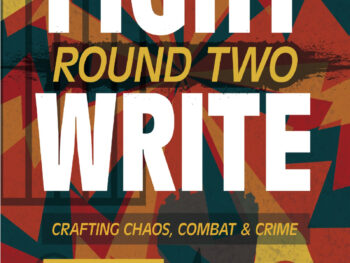
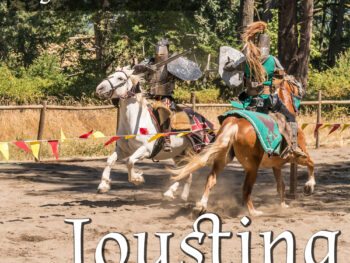
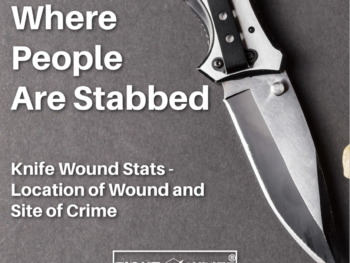
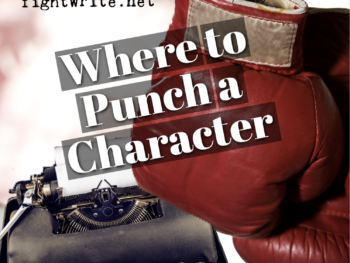

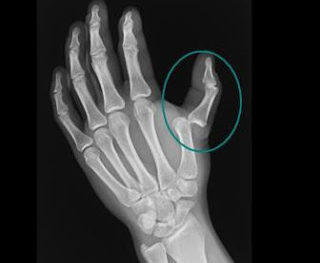


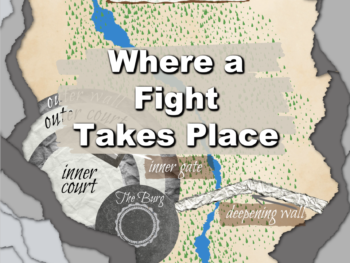
Hello, I think your site might be having browser
compatibility issues. When I look at your website in Safari, it looks fine but
when opening in Internet Explorer, it has some overlapping.
I just wanted to give you a quick heads up! Other then that, awesome blog! https://menbehealth.wordpress.com/
After examine a couple of of the blog posts in your website now, and I really like your manner of blogging. I bookmarked it to my bookmark web site listing and might be checking back soon. Pls try my website as effectively and let me know what you think.
Excellent post. I was checking constantly this blog and I am impressed!
Very useful inhfo specially thhe last part 🙂 I care for such information much.
I was seeking this particular info for a long time.
Thank you and best of luck. https://www.behance.net/gallery/220549493/re
Hiya! Quick question that’s totally off topic. Do you know how to make your site mobile friendly? My website looks weird when viewing from my iphone. I’m trying to find a theme or plugin that might be able to resolve this issue. If you have any suggestions, please share. Cheers!